Search Results
Fine Jewelry University Articles matching: “Manufacturers mark”
Showing only FJU Article results. Click here to show all results.
Fine Jewelry University (Show All FJU Articles)
-

How to Tell If a Diamond Is Natural or Lab Grown
… diamonds that are sold as natural diamonds. But, it is important to know that the majority of lab grown diamond manufacturers are perfectly legitimate and honest organizations that are upfront about their products. Some even laser inscribe all of… recently added to our own gem lab. This incredible machine is used by some of the world’s top gem labs and jewelry manufacturers daily, and it has already helped us catch undisclosed lab grown diamonds. It does not suffer from many of the …
-

How to Sell Jewelry on Craigslist and Facebook Marketplace
Selling jewelry on Craigslist, Facebook Marketplace, and other online local classified sites is a great way to get cash for your jewelry, but there are some …’t have a way to meet the potential buyer at a public place, then do not sell your jewelry through the Craigslist or Marketplace. The buyer’s bank is a good public location because if they wish to buy the jewelry they can go and get the … method. Checks of all kinds (personal, cashiers checks, money orders, etc.) can be fakes. If you are on Facebook Marketplace, check the profile of the potential buyer. Is it a brand new profile with an obviously generic or fake image? …
-
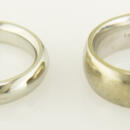
The Difference Between White Gold and Platinum
…ruthenium is often used as a hardener alloy. Platinum is usually marked with .900 or .950 to mark its fineness. Some manufacturers state what alloy they are using like 90% Platinum 10% Iridium. How white gold and platinum start out is one of the …
-
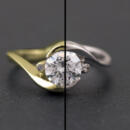
Star White Gold
…. Regular, Plus, or Premium? The White Gold Task Force statement on the plating of white gold reveals how jewelry manufacturers view rhodium plating: “The lack of an industry-accepted definition of white as applied to white gold has been a problem… only see white gold with the plating on it and assume that is its true color. Most of them don’t know that jewelry manufacturers choose the white gold alloy mix. It is much cheaper to use the standard white gold alloy (again standard is the …
-
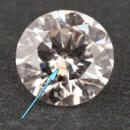
What Are Lab Grown Diamonds?
…it is a “synthetic diamond” because it does not have the same chemical structure as a diamond. A white sapphire, marketed and disclosed as a white sapphire, is a sapphire. But, if it is used in place of a diamond, then it is a diamond … coated Cubic Zirconia has an extremely thin diamond coating only. However, this does not stop some unscrupulously marketers from calling them synthetic diamonds. Now, you know better. Lab Grown Diamonds Compared with Natural Diamonds So…
-

How to Sell Jewelry on eBay and Other Websites
… unique and are willing to pay a high price for it. Second, the others are looking for a great bargain, wanting only to pay the lowest price. If your jewelry is unique, get a high price if not, then the bargain hunters are your market. The success of eBay helped a much older business the pawn shops. The pawn shops who sell jewelry on eBay and other online sites are willing to take much less because they buy them so cheap. Unfortunately, they may be your biggest …
-

How to Sell Your Jewelry
… service for a fee. Think of a jewelry broker as a hired professional working for you against a very sophisticated market like the jewelry industry. Make sure their allegiance is to you alone. Most jewelry brokers are highly trained in … of jewelry. Also realize that the prices asked for in the paper are rarely achieved and do not reveal the true market value. Some times the jewelry is sold for very much less then advertised or never sold at all. But with some safeguards…
-
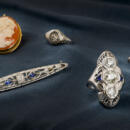
How to Value Inherited Jewelry
…, jewelry value is not one set number. It changes with the situation (who is buying, and who is selling) and the marketplace (global economy, commodity prices, local jewelry market, etc.). And, it changes with time and styles. …value of an item could be $1,000 given one set of conditions, but in a certain area, given the way it was put out to market, the condition of the item, the photo in the ad, and a million more factors the seller may only find a buyer … different types of appraisals . The replacement value insurance appraisal has the least correlation to the actual market value of the jewelry item. So, even though insurance appraisals are commonly available, this would be the least …
-
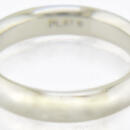
Platinum
… of the metal and none of its volume is lost. In addition to its strength and density, platinum has another remarkable quality – pliability. Platinum is a symbol of true love, purity, rarity and strength. These qualities of platinum are … white luster. This helps to reflect the true radiance of diamonds. In the United States platinum is usually marked: PT or PLAT. In Europe, platinum is identified by the following marks: 950 or PT950. The History of Platinum in Jewelry …